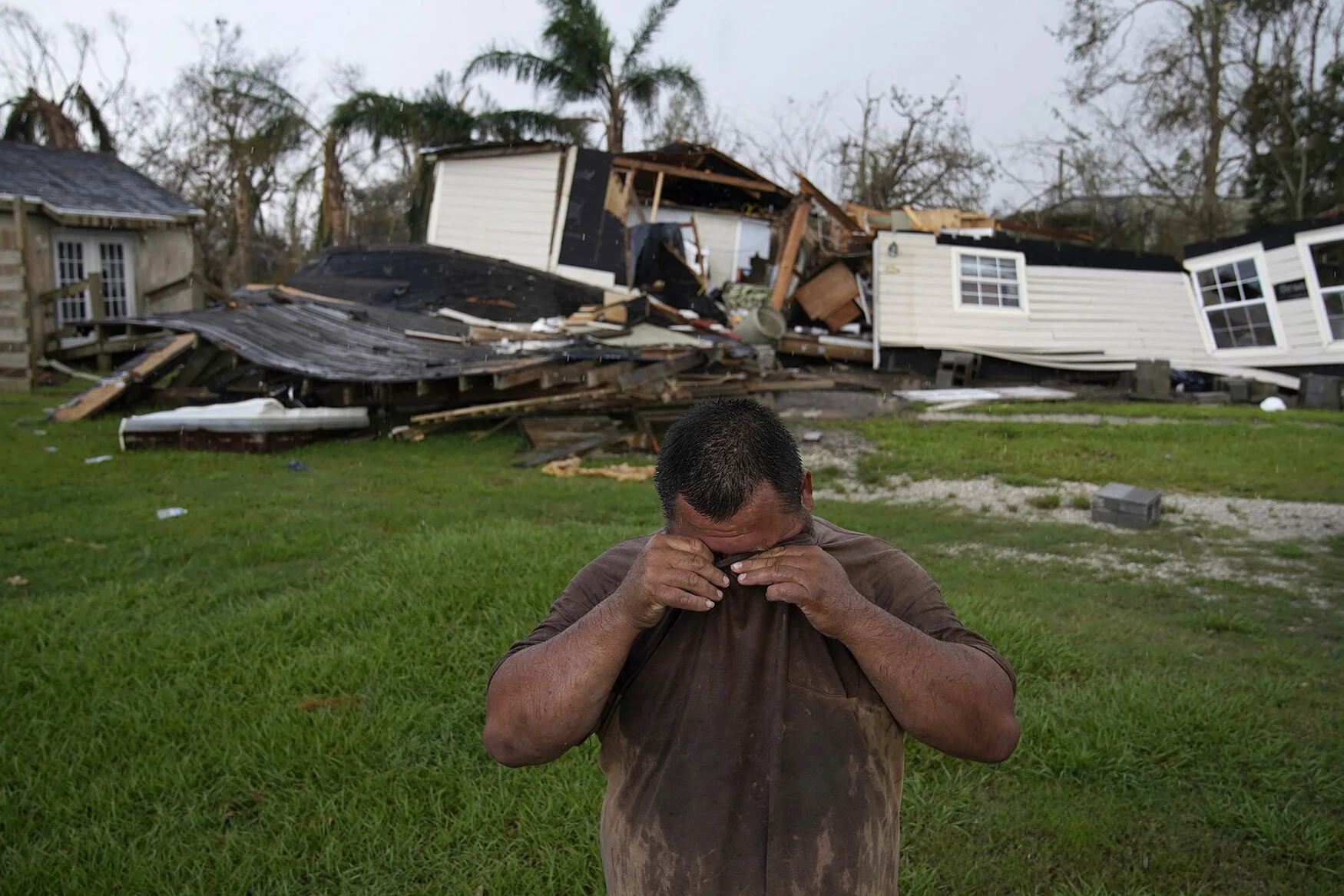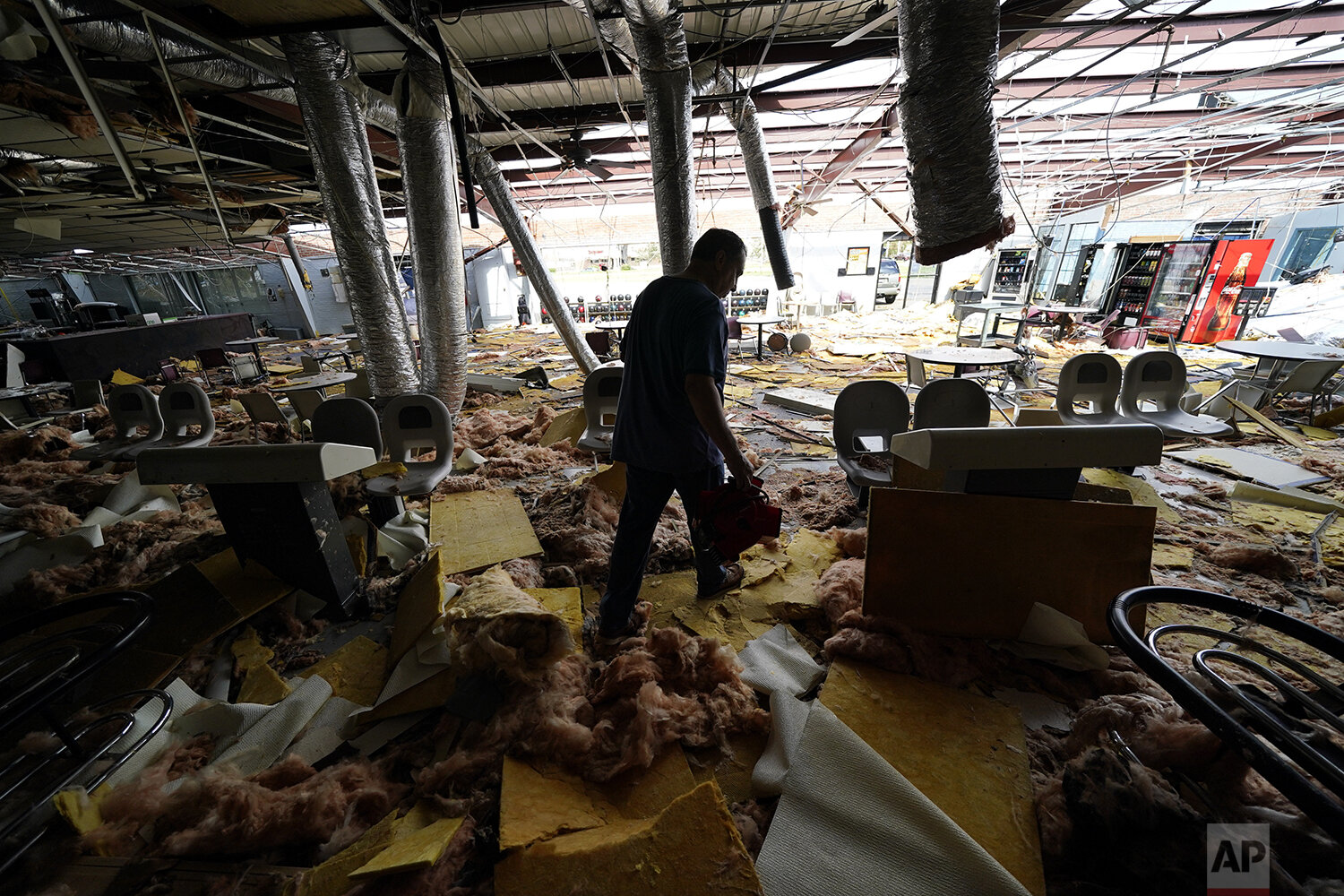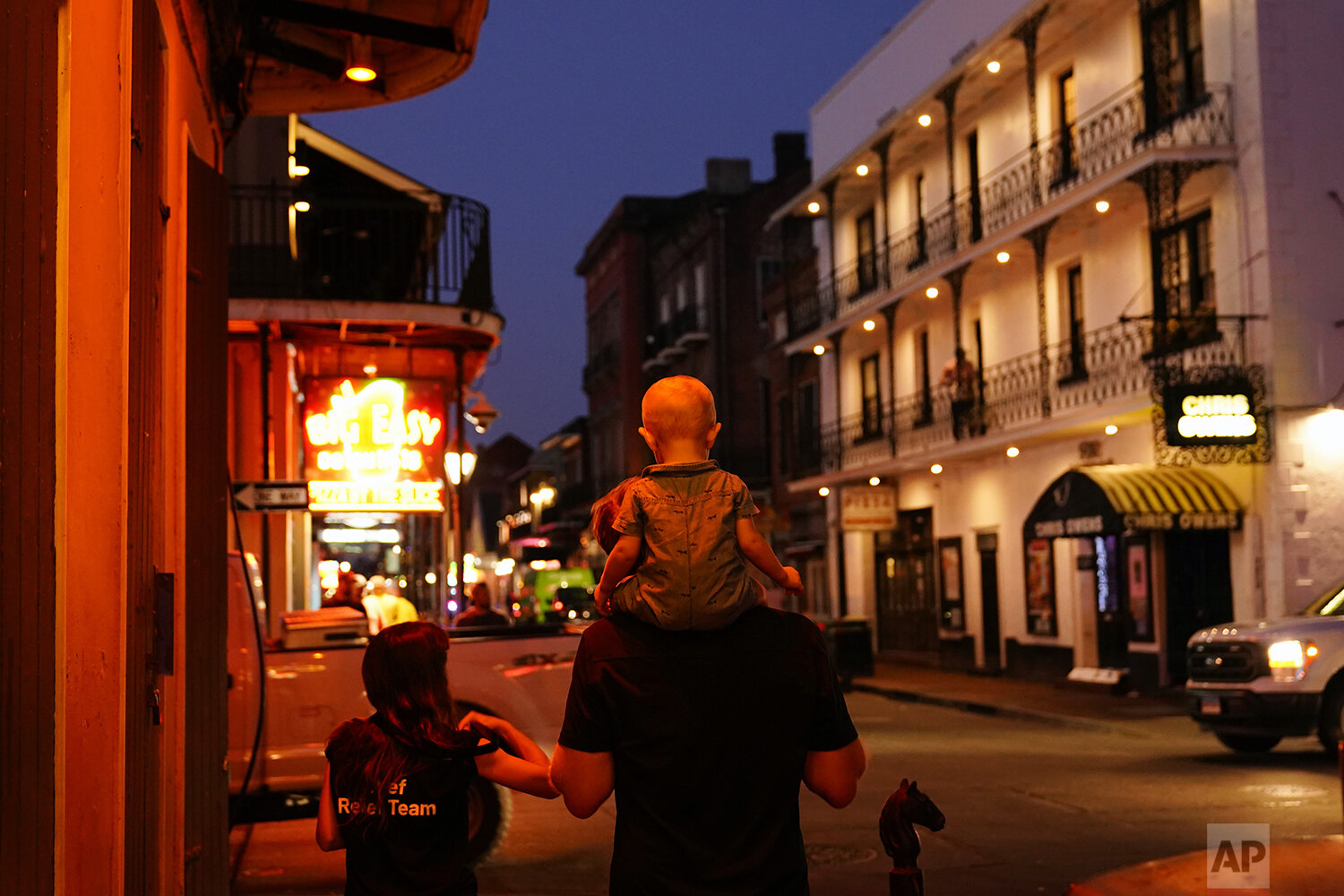Hurricane Ida: Covering the aftermath

For the photographers documenting Hurricane Ida’s arrival in Louisiana, howling winds and blackouts inevitably brought back memories of Hurricane Katrina 16 years ago.
Whether juggling their own home repairs or traveling from elsewhere to navigate the damage, they all were struck by the community’s resilience and warmth.
The Shot is a monthly series showcasing top photojournalism from staff photographers at The Associated Press.
Each month, AP photographers will share the stories behind some of their iconic imagery.
Produced by AP News staff. The sponsor was not involved in the creation of this content.
David J. Phillip
My coverage of Hurricane Ida started just the same as it did for Hurricane Katrina 16 years ago. I drove from Houston to Lafayette, La., to spend the night as the hurricane made landfall Sunday.
Monday morning, our first goal was to get up in the air to photograph the damage, but weather conditions made a morning flight impossible.
Instead, I drove southeast to Houma, La., where Ida’s winds caused extensive damage. Downtown looked like a bomb went off with blown-out windows and debris and fallen trees covering the roads.
After photographing some of the damage, I headed back toward Lafayette as weather conditions continued to improve. I took a helicopter, a Robinson R44 (the same as used during coverage of Katrina), to photograph the damage from the air.
It was a tale of two sides of the storm as I flew from West to East. Places west of where the hurricane eye made landfall had severe wind damage. As I flew further East toward Lafitte, the similarity to Katrina became apparent. Towns were covered by floodwaters and cut off much like they were 16 years ago.
The following days were spent covering the cleanup and residents returning to their homes to find most of their belongings were destroyed. Several storm victims breaking down in tears as they try to salvage what was left.
One saying “It isn’t our first rodeo, but it’s our worst rodeo.”
Eric Gay
Sitting in the dark listening to the howling winds of Hurricane Ida, it was impossible not to recall the day exactly 16 years ago that Hurricane Katrina struck New Orleans, breaching levees and taking more than 1,800 lives.
Katrina struck as a Category 3 storm with 127 mph winds; Ida was arriving as a Category 4 storm with 150 mph winds. The new, $14 billion levee system that protected New Orleans was receiving its first major test.
Those who remained in the city held their collective breath, myself included.
Like Katrina, Ida knocked out power to the city. This time 100 percent. It was dark. After Ida passed, I drove around to survey the effects.
Power lines were down, roofs and windows were damaged and traffic lights were out.
But the levee held.
I drove down streets that had required boats after Katrina. There were no long lines of rescued residents at the convention center, and no military vehicles shuttling groups through the flood waters around the Superdome.
I photographed long lines of frustrated residents waiting for gas, food, water, and ice, but also businesses and neighbors pitching in to grill and feed those needing a meal – many while sharing their own Katrina stories and memories and celebrating that they had survived yet another unwelcome storm.
Gerald Herbert
Living in New Orleans means I cover a lot of hurricanes, but it’s a lot different when it hits your own house, two years in a row. I even rushed my marriage a day when one landed on our wedding date.
Although Hurricane Ida largely spared my home, it brought the challenges of living and working with no water and electricity, plus seeing your family, friends and neighbors go through all the hardships.
Fixing your own damage, helping others, and covering the story, became a test of endurance, physically and emotionally.
You will be immersed in the coverage of the never-ending stream of suffering and hardships until everything is completely healed. You feel guilty complaining because right down the road, miles of people lost everything.
The one thing we try to do as photojournalists is show the realities and the suffering of others, but this time it’s your people and your community. I hope my pictures can impact people in ways that bring those who are suffering the outside help they need.
That’s the silver lining: The relationship building, people helping people, and the lasting bonds that are strengthened as you go through it together.
John Locher
Looking back at the time I spent in Southern Louisiana, what still resonates with me was the warmth, kindness and openness of the people I spoke with and photographed.
One of the unfortunate things as a photojournalist is that we often first meet someone in the midst of tragedy - suffering the death of a loved one or loss of a home or property. For the people of bayou country south and west of New Orleans, it was returning to their communities ravaged by the winds and water of Hurricane Ida.
Almost every time I walked up to residents I would be greeted by a smile or a fist bump, even before I had a chance to introduce myself. I was welcomed warmly into storm damaged homes even as they were in the middle of recovering what few personal items survived unscathed.
People waded through floodwaters to greet me and share their stories. I even had a family apologize for not having food prepared to offer me, as we spoke while standing outside of their home -- more walls missing than remaining. An unnecessary gesture if there ever was one.
“I’ve been through four or five hurricanes and this was the worst,” Starlin Billiot Sr. told me as he doused water over himself with a small cup to wash away soap covering his body.
He was cleaning up outside of the home of Tommy Williams in Dulac, La., where they rode out the storm. They had been living without power or running water for days.
It was a sentiment I heard from many others: this was the worst storm they had seen - worse than Hurricane Katrina.
Billiot Sr. spent the night of the storm with a few others trying to hold their house together, shoring up walls with spare pieces of wood and screws as violent winds tore away pieces of the home.
"I'm not gonna lie to you, I cried,” said Billiot Sr. about the experience.
“We all cried,” added Williams.
Matt Slocum
I was late to Hurricane Katrina and late to Hurricane Ida. As I came in well after the storms, people were welcoming. The initial stress had passed.
Folks were in cleanup mode, trying to put their lives and homes back together, resigned and waiting for the utilities to come back online. The people I met rode out Katrina, rode out Ida and will ride out the next big storm.
They were eager to share their time and experiences and share in the collective misery.
No electricity. A boil-water advisory. Sweaty, sleepless nights. Warm bottles of water. Bulk-pack snacks. "Spill-proof" gas cans. Hungry mosquitoes. Refueling a loud, thirsty generator in the middle of the night. Neighbors helping neighbors, colleagues helping colleagues and strangers helping strangers.
During Katrina, I covered evacuees in San Antonio and eventually flew into New Orleans with the Air Force on a humanitarian supply drop.
During Ida, I drove into New Orleans with a rental truck loaded down with extra supplies for our staff: a large generator, cases of water, boxes of food, gas cans, ice and lots of camping gear.
My role in the storms has been minor. I’m just glad to help and try to find ways to be useful.
I’ve been a shopper, a driver, a fixer, a landscaper, a roofer, an electrician, a bartender, a psychiatrist, a disc jockey and even, sometimes, a photographer. It’s surreal, seeing the best come out from people in what is likely the worst times of their lives.
Spotlight is the blog of AP Images, the world’s largest collection of historical and contemporary photos.
Produced by AP News staff. The presenting sponsor was not involved in the creation of this content.





























